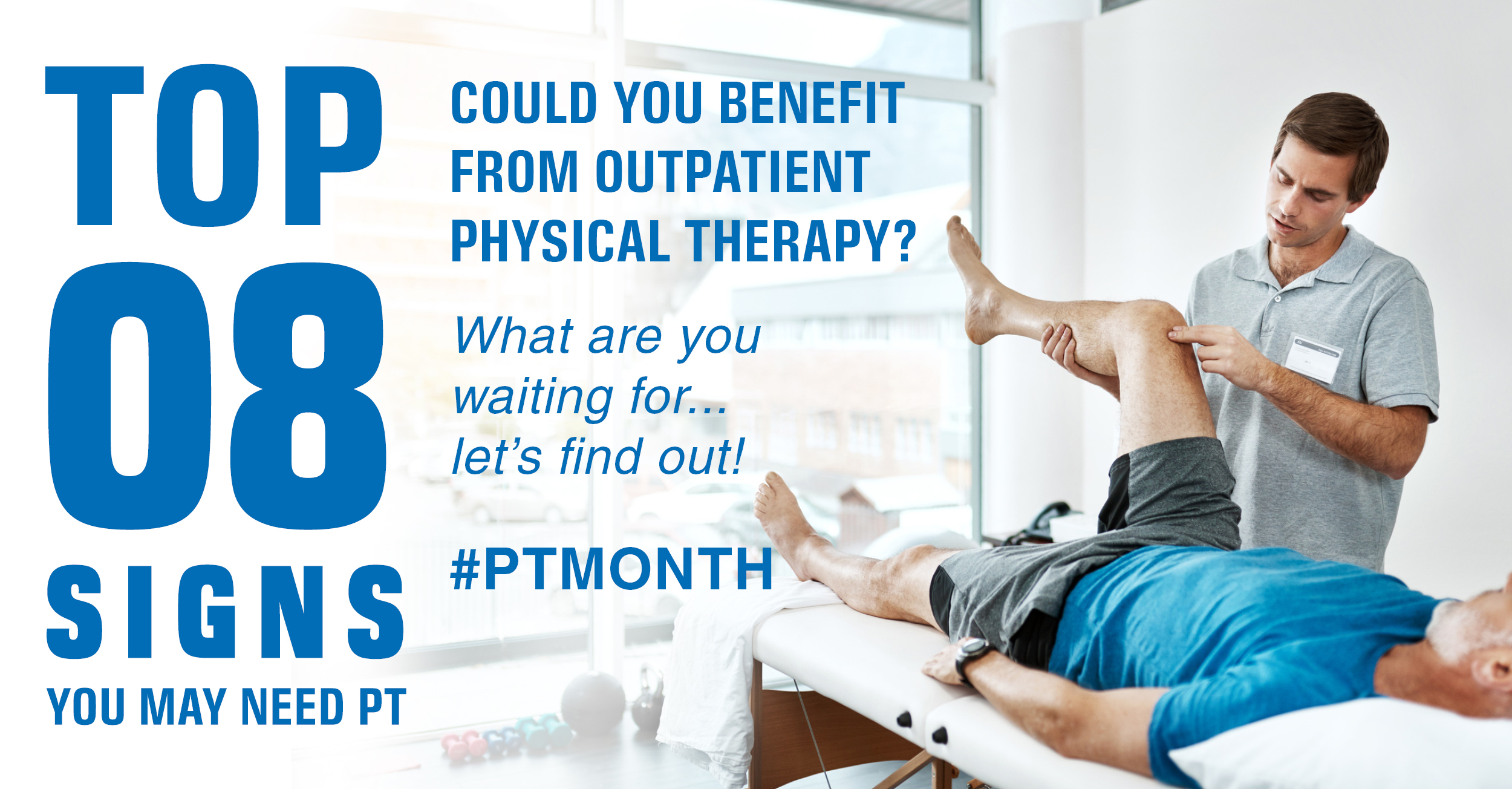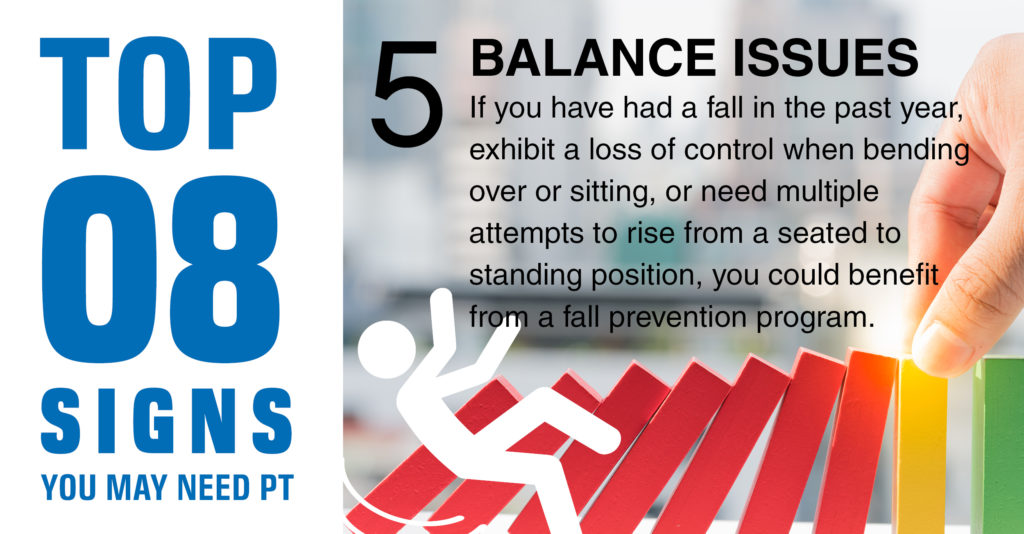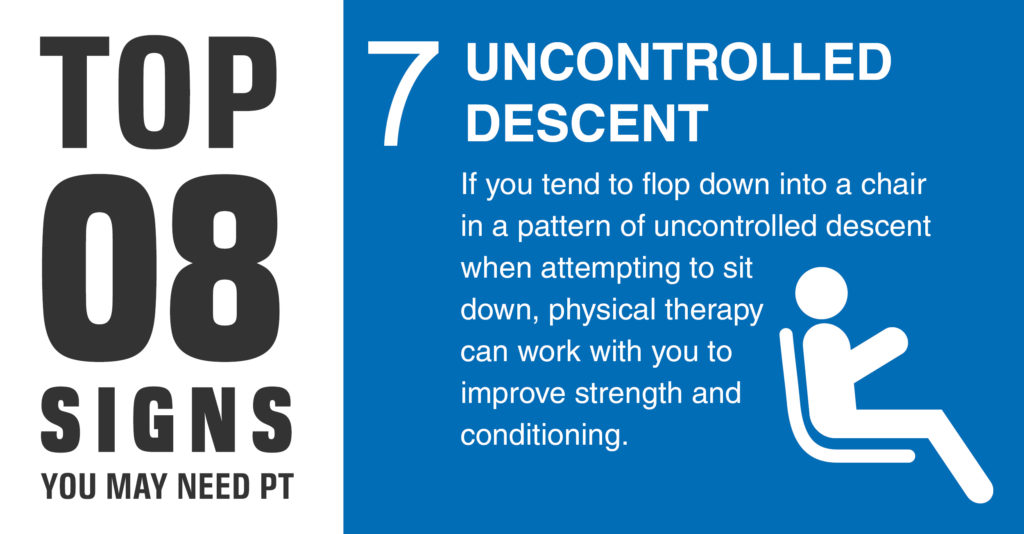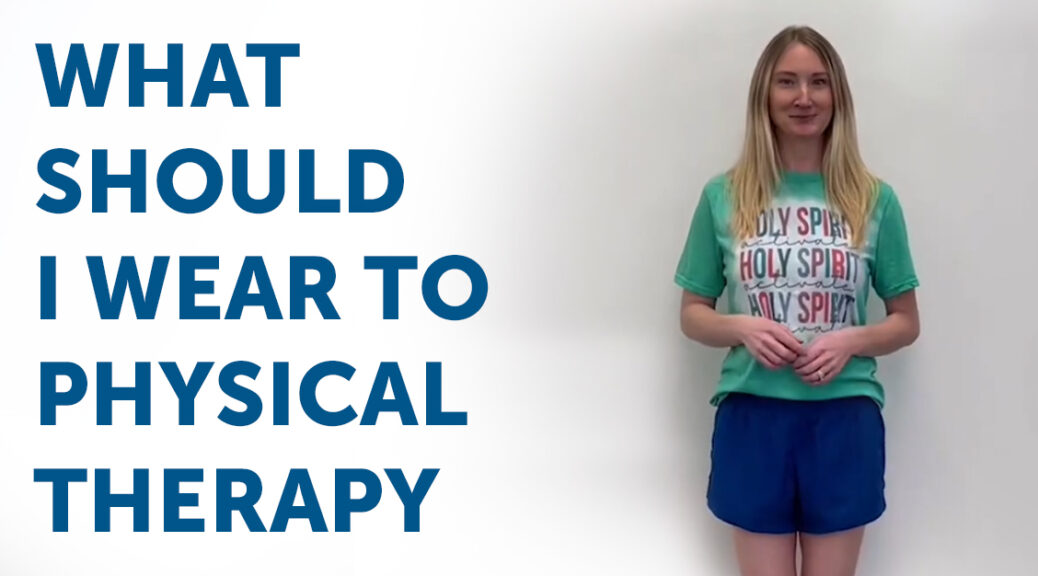
We are so excited to have the opportunity to share what we’re all about. Without further ado, let’s get started on our Top 8 signs you could benefit from outpatient physical therapy. Some of these may be surprising…
#1 You Require Pain Medications

The U.S. is the largest consumer of prescription drugs in the world, but it doesn’t have to be. Physical Therapy is a safe, non-invasive form of treatment for patients experiencing musculoskeletal pain or injuries. Instead of masking symptoms, we get right to the source and help you heal. Manage pain safely with physical therapy instead of relying solely on opioids or other pain medications.
#2 You’re In Pain

If you are experiencing pain, we can help you treat the cause and not just the symptoms. In fact, physical therapists spend most of their careers working with patients to help them get rid of their pain so that they can do the things they enjoy most. If you have consistent pain and have been nursing an injury for weeks before seeking help from a medical professional, your body may have already begun to heal; and not always the way we would like it to. By going to physical therapy first, you can help cut down the time off work, off of sports, and promote healing much faster.
#3 Pre & Post Operative Recovery

Pre & Post-surgical rehabilitation helps patients regain their mobility after going through an operation. A post-op recovery plan typically includes:
- Pain reduction
- Exercises and stretches to improve strength, flexibility, and endurance
- Balance and/or gait training
- Patient education and self-care training
#4 Nagging Symptoms

Untreated, a nagging pain can become chronic pain. Overuse and Repetitive Strain Injuries (RSI) from work or sports can potentially lead to injury and sometimes surgery. These nagging pains are a warning from your body that you need help. Physical therapists can work with you to reduce your pain and prevent injuries from happening. By going through movement training, learning to take breaks when necessary, and developing stretch and exercise routines, we can get rid of that pain and keep you in your sport or workplace.
#5 Balance Issues

You may recall from Falls Prevention Week last month, that fall death rates have increased by 30% since 2007. For the most part, falls are preventable, and physical therapists are uniquely poised on the front lines in the battle against falls.
- Have you fallen in the past year?
- Do you feel unsteady when standing or walking?
- Are you worried about falling?
If you answered yes to any of the above you could benefit from a fall prevention program to improve your strength, balance, & gait.
#6 Have Trouble Sleeping

Who knew physical therapists had so many skills up their sleeves? Sleeping is one of the most important things that we can do for our bodies. Our bodies utilize this time for recovery and sleeping in a position that causes pain can prevent the body from recovering. Therefore, finding an appropriate sleeping position that results in your body feeling at ease is very important. In fact, part of rehabilitation is educating patients on how to sleep in a position that won’t aggravate the injury as they heal.
#7 Uncontrolled Descent

As physical therapists, we spend a good bit of time working with patients that suffer from muscle weakness. Whether it be from old age, prolonged bed-rest, or a neurological disorder, we can help. If you or someone you know has trouble remaining upright or is unable to control their descent from a standing to a sitting position we can create a strengthening program designed specifically for their needs and ability levels.
#8 Limited Activities of Daily Living

Last but certainly not least, we help people achieve their movement goals! If you find yourself unable to carry the laundry basket down the hall, wash the car, or basically any of the activities that you do on a daily basis, we’re here for that. Helping people reach their goals is our passion and nothing makes us happier than seeing you get back to the lifestyle you love most.
From infants to seniors, physical therapists are working hard each day to help the people of their communities be at their best. We hope you enjoyed our Top 08 signs that could benefit from outpatient physical therapy. Maybe you have already been treated for one of them. If you believe that you need physical therapy you can easily find a physical therapist near you and get started today. With in-person and virtual options available through Telehealth, there has never been a better time to get started on your care.






















